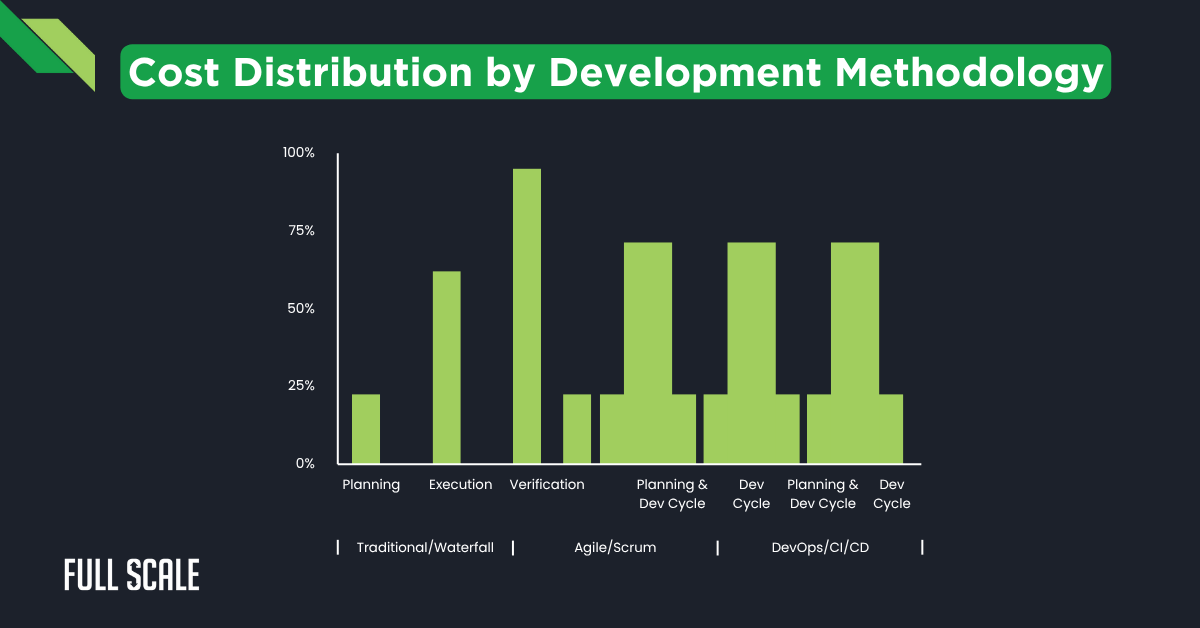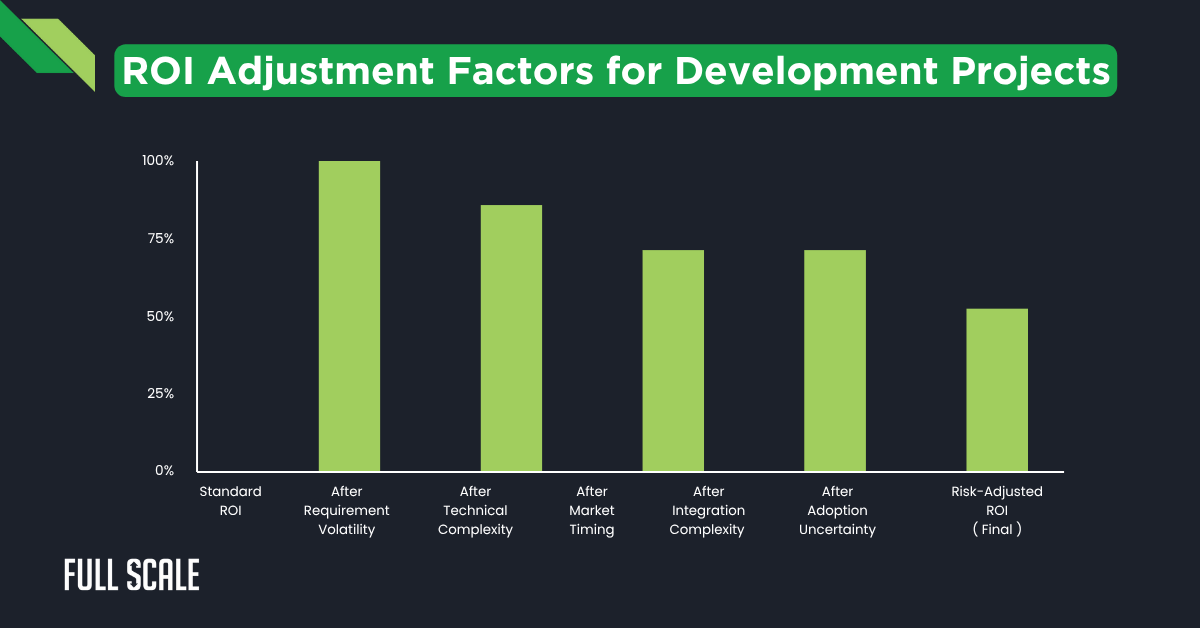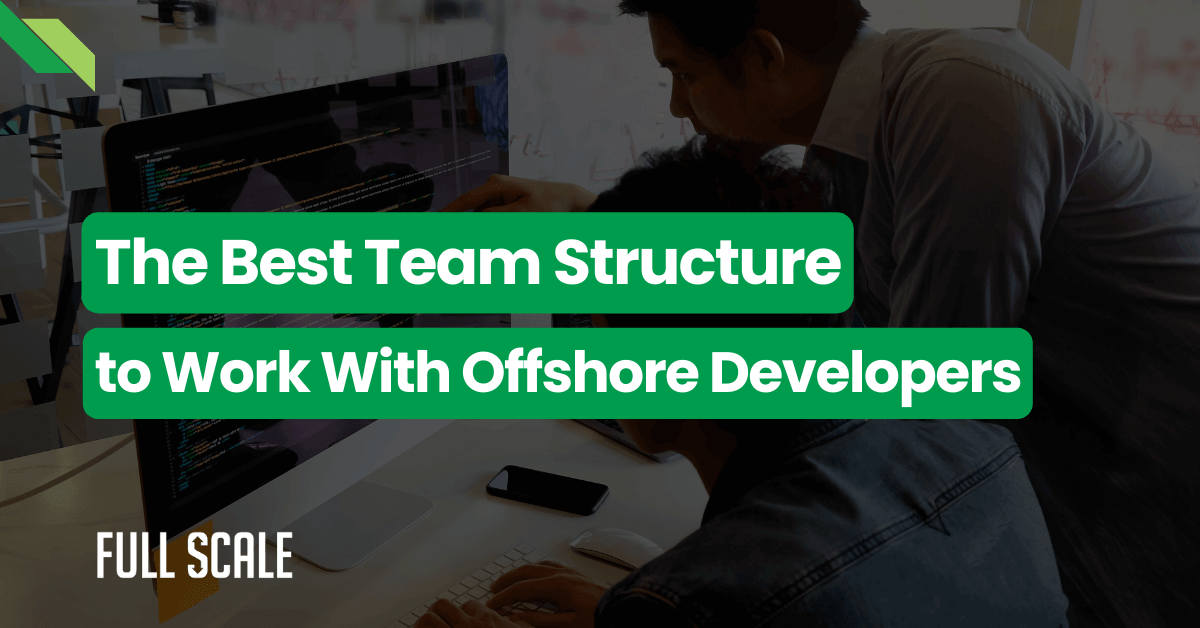Unpredictable development expenses frequently derail quarterly financials and damage shareholder confidence. Financial leaders need proven frameworks to transform volatile engineering cost into predictable models.
Key Challenges in Technical Projects
- 85% of software projects exceed initial budgets by an average of 27% (McKinsey & Company, 2023)
- Technical initiatives account for 40% of enterprise budget variances (Deloitte CFO Insights, 2024)
- Only 32% of organizations accurately forecast development costs within 15% of actual spend (Gartner IT Finance Survey, 2023)
The Financial Anatomy of Software Development Expenses
Development projects consist of several interconnected elements that impact financial forecasting. Each component requires specific monitoring approaches for effective budget management.
Key Components in Development Budget Analysis
- Direct Labor (45-65%) – Developer salaries, benefits, and contractor fees
- Infrastructure (15-25%) – Cloud services, hosting, development environments
- Tools & Licenses (5-10%) – Development software, testing platforms, security tools
- Maintenance (10-20%) – Bug fixes, updates, security patches, refactoring
Labor Costs: Team Structure Comparison
Team composition significantly impacts financial predictions for technical projects. The table below compares the financial implications of different staffing approaches.
| Cost Factor | Local Teams | Distributed Teams | Hybrid Teams |
| Base Salary | $120-180K/yr | $40-85K/yr | $65-120K/yr |
| Onboarding Time | 2-4 weeks | 3-6 weeks | 3-5 weeks |
| Scalability Cost | High | Low | Medium |
| Flexibility Premium | 15-25% | 5-10% | 8-15% |
| Management Overhead | 10-15% | 15-25% | 12-20% |
Technical debt functions as an invisible liability in project projections. Every $1 saved by deferring quality investments typically results in $3-5 of future maintenance expenses.
Proper accounting for technical debt reveals true development costs. This transparency enables more accurate long-term financial planning and helps prevent unexpected budget overruns.
Building a Predictive Engineering Cost Model
Creating an accurate forecasting system requires combining financial principles with development metrics. The chart below outlines a comprehensive approach to building your prediction model.

Financial leaders should track specific metrics that provide early warning of potential budget variances. Early detection allows proactive intervention before small issues become major financial problems.
Critical Warning Indicators
- Sprint completion rates below 70% for two consecutive iterations signal likely budget overruns
- Defect escape rates exceeding 10% correlate with 30-50% increases in maintenance costs
- Technical debt ratios above 25% predict maintenance cost spikes within 6-9 months
- Team velocity fluctuations exceeding 20% indicate underlying productivity issues
For agile development approaches, sprint velocity creates a mathematical basis for engineering cost projections. This approach produces bottom-up forecasts based on team-specific productivity factors rather than relying on industry averages.
Financial Strategies for Different Development Methodologies
Development methodologies significantly impact spending patterns and predictability. The chart below compares how various approaches distribute expenses across project phases.

Understanding these methodological differences allows financial leaders to select appropriate forecasting approaches. Applying waterfall financial models to agile projects, for example, typically results in a 30-40% forecast inaccuracy.
Team composition dramatically impacts both expenses and financial predictability. Full Scale’s staff augmentation model combines the quality of in-house teams with the economics of offshore development, optimizing both cost efficiency and output quality.
Mitigating Financial Risk in Development Projects
Standard ROI calculations frequently fail to capture software development realities. The chart below illustrates how various risk factors transform standard financial projections into more realistic expectations.

This realistic view prevents significant financial disappointment and improves resource allocation decisions. Engineering spend forecasting becomes much more accurate when these adjustment factors are applied to initial projections.
Effective governance balances accountability with development realities. The continuous financial governance cycle below provides control without bureaucratic obstruction.

The key to effective IT cost management lies in creating governance structures that provide visibility without stifling innovation. Monthly governance reviews focused on budget variances help organizations maintain financial discipline while enabling development teams to deliver value.
Communication Strategies for Finance and Engineering Alignment
Effective cross-functional communication transforms financial management from confrontational to collaborative. Creating shared KPIs between finance and engineering departments promotes aligned objectives.
| Engineering Metric | Financial Counterpart | Shared Goal |
| Sprint Velocity | Delivery Cost Efficiency | Optimize output/investment |
| Technical Debt Ratio | Future Liability Index | Minimize future cost bubbles |
| Feature Completion Rate | Value Delivery Timeline | Accelerate benefit realization |
| Defect Density | Quality Assurance ROI | Reduce remediation expenses |
| System Stability | Operational Risk Exposure | Minimize business disruption |
Implementing financial impact assessments for major technical decisions builds cost awareness without requiring financial expertise from engineers. This practice creates a shared understanding of how technical choices affect the financial bottom line.
Financial leaders can further improve alignment by:
- Creating a shared lexicon that translates technical terms into financial concepts
- Conducting joint planning sessions to set realistic technical and financial objectives
- Developing transparent dashboards accessible to both finance and engineering teams
- Establishing regular review cadences tied to development milestones, not just financial quarters
These approaches bridge the traditional gap between technical and financial departments, creating a unified perspective on development investments.
Future-Proofing Your Development Budget Strategy
Forward-looking financial planning must accommodate rapid technological evolution. Several technological shifts are reshaping software development economics and cost structures.
Technology Trends Impacting Development Budgets
- AI-Assisted Development: Reducing expenses by 15-30% through intelligent code generation
- Low-Code/No-Code Platforms: Decreasing project costs by 40-60% for straightforward applications
- DevOps Automation: Cutting deployment and maintenance expenses by 20-35%
- Enhanced Security Integration: Increasing baseline budgets by 10-15% compared to historical norms
Building flexibility into long-term financial planning requires specific strategies for efficient engineering spend forecasting. Organizations need adaptable approaches that accommodate technological uncertainty.
Financial Flexibility Strategies
- Create modular budgeting frameworks that separate stable from volatile cost elements
- Develop technology-specific contingency models based on maturity assessments
- Implement rolling planning horizons with detailed near-term and flexible long-term forecasts
- Establish segregated innovation funds (3-5% of total budget) for experimentation
Organizations should develop scenario planning capabilities to prepare for major technology transitions. Creating response playbooks for these scenarios enables rapid resource reallocation when market conditions change unexpectedly.
Many organizations fail to integrate new technological capabilities into their financial planning processes. This oversight prevents them from capitalizing on cost-saving innovations while simultaneously exposing them to disruption risks from more agile competitors.
Transform Your Engineering Cost Management with Full Scale
Predicting and controlling engineering costs requires expertise in software budget planning and development cost prediction. Full Scale specializes in helping businesses optimize their engineering costs through strategic staff augmentation.
How Full Scale Optimizes Your Engineering Cost Structure
- Financial Predictability: Our transparent pricing models eliminate budget surprises
- Technical Excellence: Our pre-vetted developers deliver consistent quality
- Scalable Resources: Our flexible engagement models allow precise capacity adjustment
- Strategic Guidance: Our advisors help build cost-effective engineering cost forecasting
- Risk Mitigation: Our distributed team model reduces concentration risk
Don’t let unpredictable engineering costs derail your financial planning. Schedule a consultation today to learn how Full Scale can transform your development economics.
Consult Experts on Engineering Cost Strategy
FAQs: Engineering cost
What factors most significantly impact engineering cost forecasting accuracy?
The three most influential factors affecting financial forecast accuracy for technical projects are:
- Team composition changes – Senior/junior developer ratios can swing costs by 30-50%
- Technical complexity uncertainty – Novel technologies typically increase costs by 25-40%
- Scope definition clarity – Poor requirements increase development expenses by 20-35% on average
How often should financial models for technical projects be recalibrated?
Development budget models should be recalibrated on three different cycles for optimal accuracy:
- Monthly – Adjust for team velocity changes and sprint-level variations
- Quarterly – Update cost drivers and refine overall engineering cost forecasting methodology
- Annually – Conduct a comprehensive model review and incorporate industry benchmarks
What are the most effective KPIs for monitoring development spending efficiency?
Focus on these five indicators for maximum financial visibility into technical projects:
- Cost-per-story-point – Measures the efficiency of your development investment
- Technical debt ratio – Quantifies future maintenance cost liabilities
- Defect escape rate – Predicts quality-related cost impacts
- Actual-to-forecast variance – Gauges prediction accuracy
- Feature cycle time – Tracks delivery speed against engineering spend
How can CFOs balance software budget planning with agile development approaches?
Effective financial planning in agile environments requires specific strategies:
- Creating rolling quarterly forecasts instead of rigid annual budgets
- Establishing funding guardrails with 15-25% flexibility ranges
- Focusing on outcome-based rather than activity-based financial tracking
- Implementing stage-gate funding releases tied to demonstrated business value
- Building separate capacity-based budgets for maintenance versus new development
How does Full Scale help organizations optimize their engineering cost structure?
Full Scale reduces development expenses and improves financial predictability through:
- Transparent pricing models with no hidden fees or overhead charges
- Pre-vetted specialized developers reducing onboarding costs by 40-60%
- Flexible team scaling allowing precise alignment between cost and capacity
- Global talent networks providing specialized skills at 30-70% below local market rates
- Budget assessment services identify optimization opportunities in your development lifecycle
What emerging technologies have the largest impact on development cost prediction?
IT cost management is being transformed by several technological innovations:
- AI-assisted development tools – Reducing routine coding costs by 15-30%
- Low-code/no-code platforms – Decreasing application development costs by 40-60%
- DevOps automation – Cutting deployment and maintenance costs by 20-35%
- Cloud-native architectures – Shifting costs from CapEx to OpEx with more predictable spending patterns
API-first approaches – Reducing custom development costs through standardized integration patterns

Matt Watson is a serial tech entrepreneur who has started four companies and had a nine-figure exit. He was the founder and CTO of VinSolutions, the #1 CRM software used in today’s automotive industry. He has over twenty years of experience working as a tech CTO and building cutting-edge SaaS solutions.
As the CEO of Full Scale, he has helped over 100 tech companies build their software services and development teams. Full Scale specializes in helping tech companies grow by augmenting their in-house teams with software development talent from the Philippines.
Matt hosts Startup Hustle, a top podcast about entrepreneurship with over 6 million downloads. He has a wealth of knowledge about startups and business from his personal experience and from interviewing hundreds of other entrepreneurs.




